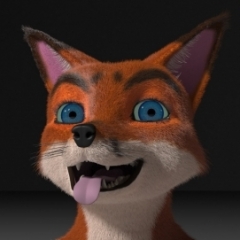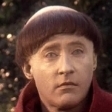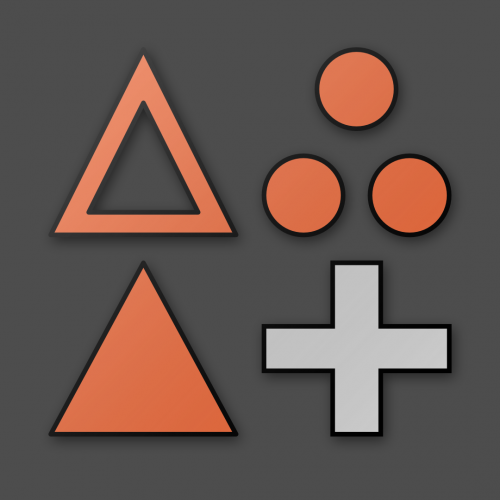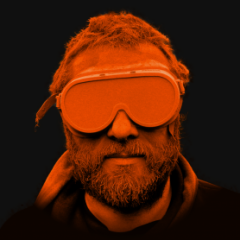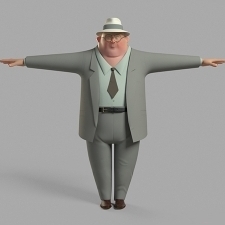Leaderboard
-
in all areas
- All areas
- Videos
- Video Comments
- Files
- File Comments
- File Reviews
- Pipelines Tools
- Pipeline Tool Comments
- Pipeline Tool Reviews
- Databases
- Database Comments
- Database Reviews
- Plugins
- Plugin Comments
- Plugin Reviews
- Images
- Image Comments
- Image Reviews
- Albums
- Album Comments
- Album Reviews
- Topics
- Posts
- Blog Entries
- Blog Comments
- Status Updates
- Status Replies
-
Custom Date
-
All time
May 3 2016 - April 19 2024
-
Year
April 19 2023 - April 19 2024
-
Month
March 19 2024 - April 19 2024
-
Week
April 12 2024 - April 19 2024
-
Today
April 19 2024
-
Custom Date
04/14/2022 - 04/14/2022
-
All time
Popular Content
Showing content with the highest reputation on 04/14/2022 in all areas
-
Update Adds Highly Requested Features and Deeper Integration with Chaos Ecosystem PRAGUE, Czech Republic — April 13, 2022 — Today, Chaos launches Chaos Corona 8 for 3ds Max and Cinema 4D. In the first-ever joint update to both tools, Chaos Corona 8 brings a new name and more options to the artist-friendly render engine. Artists and designers can now access instant content, enhanced scattering and the other highly requested features behind the most substantive update in Corona history. “By connecting Corona 8 into the Chaos ecosystem, designers never have to worry about how things move back and forth again. They can just pick the right tool for the job, and trust that it will integrate well with everything else they are doing,” said Ondřej Karlík, director of Chaos Czech Development at Chaos. “As Chaos continues to share technology, we bring more power to our users, helping them do more in their product of choice.” For faster scene creation, designers can now use Chaos Cosmos, a new 3D content system packed with 1,300 free, highly curated models and HDRIs. With Chaos Cosmos, designers can stage interiors and environments in a few clicks, with instant access to commonly used assets like furniture, trees, cars and people. Each asset is directly searchable within 3ds Max and Cinema 4D, making the process of creating believable imagery even more fluid. The update also welcomes the addition of Chaos Scatter (the next generation of Corona Scatter), allowing users to quickly place objects into a scene in a believably randomized or patterned way. Ideal for adding things like rocks and trees, or textile fibers, Chaos Scatter is designed to be flexible and useful across landscapes, interiors and more. The release also includes: Corona Decal — Easily place things like splashes, scratches and craters. Multiple decals can be stacked and controlled in the viewport. Corona Slicer — A material that allows any geometry of any shape to be used in creating a cutaway of a building or other object. Corona Slicer includes options to create caps, define their materials and include/exclude objects. Tone Mapping — Designers can now exert more control over the final look of a cinematic render, without resorting to external image editing software. A full set of features is available on the Chaos Corona website. Pricing and Availability Chaos Corona 8 is available now for 3ds Max 2014-2022 (64 bit) on Windows, and for Cinema 4D R14-R25 (64 bit) on Windows and Mac. Pricing is subscription-based, with monthly rates set at $45 and yearly rates at $310. About Chaos Czech Chaos Czech are the creators of Corona Renderer, a high-performance photorealistic rendering engine. Chaos Czech is a leader in architectural visualization software, where it offers a simple, yet powerful approach for professional artists. Chaos Czech continues to bring this approach to its development of new tools and technologies for architecture, advertising and motion graphics. Chaos Czech, a Chaos company, is headquartered in Prague. About Chaos Chaos develops visualization technologies that empower artists and designers to create photorealistic imagery and animation across all creative industries. The firm’s physically based renderer, V-Ray®, has been honored with both an Academy Award® and an Engineering Emmy® for its role in the widespread adoption of ray-traced rendering in motion pictures and television. In 2022, Chaos merged with Enscape, a leading provider of real-time rendering and design workflow technology for the AEC industry. Enscape offers innovative solutions that connect directly into modeling software, integrating design and visualization workflows seamlessly into one. Together, the newly combined company is creating an end-to-end ecosystem of 3D visualization tools accessible to everyone. For more information, visit chaos.com and enscape3d.com.2 points
-
Not just rendering: viewport performance, as mentioned, really needs improvements. On a 5900X, for a two character animation I still need to create low-poly versions of them and switch off pose morphs when animating because otherwise I can easily go from circa 30 FPS playback down to 10 or less. When animating pose morphs, I just need to bite the bullet and do viewport renders more often (or VAMP the morphs on the low-poly versions, which doesn't always look great). And I believe it is not GPU-bound – flying around paused high-poly scenes is nice and smooth even on my old 970. Anyone more technically knowledgeable, how plausible do multi-core Skin deformer and pose morphs sound? It seems like an ideal use-case, since each vertex is affected independently of the other vertices' results, right? It's not like, say, physics simulations or IK where multi-core support sounds difficult and nasty even on first thought.2 points
-
2 points
-
One week away. I get the feeling this release may pull me back to maxon if big leaps are made, or push me all the way towards Blender. My mind just doesn't work as well in Blender (probably due to lack of practice) and it's definitely harder on my hands than C4d. I can't deny that Blender's two modern render engines are better than C4D's none, though. I also saw a teaser from the U-render twitter account that appears to be NPR/toon rendering. I'm holding out for news from them, too. I hope they aren't buried by the post S26 release hype/anger. I just know I don't want any more red giant looks or other weird things added to Cinema if the core features aren't evolving and speeding up. The subscription model made it easier for me to cancel if I'm unhappy with a release. That subscription model doorway swings both ways.2 points
-
Version 1.2
235 downloads
I have been using "Set Selection" on many occasions. Be it to create selection tags to apply different materials to an object. Or simply as kind of a clipboard to temporarily hold a set of selected polygons during modeling. However, in most cases I do not have enough with a single selection tag. It can happen that during a modeling session I need a few temporary selections, to be picked up later in the process when I need to work here and there on a model. As such, in the past I had a love-hate relationship with the "Set Selection" command. It was a very useful tool, except that it required me to always deselect the newly created selection tag before I could create another one. Reason for this is that if you perform a "Set Selection" with a selected tag, the newly selected items would be merged into the selected tag ... instead of being created in their own separate tag. I mostly use the Commander to quickly type "set se" and press enter. Or I would add the "Set Selection" icon into a modeling palette and dock it in the layout. Still, in order to be able to create multiple selection tags, I would need to execute the command, deselect the tag, and proceed with creating a new selection. NOT ANYMORE ... It finally annoyed me so much that I spend some time writing a script to provide the functionality to perform a "Set New Selection" ... NOT overwriting the current selection tag. This script will create a new selection tag of its own, use an appropriate unique name (just as the native "Set Selection"), store the selected items be it polygons, edges or points. I call it: Set New Selection. The good thing is, that you can execute this script from the Commander, or drag the icon into a palette and dock it into the layout. AND it can coexist next to the native "Set Selection". Which means you can still use the original behaviour if you want to overwrite a selection tag, or use the new one to create separate tags each time the script is executed. Isn't that neat? Yes, I thought so too! Does work with R16 - R23 (not tested with S22, S24) HOW TO install: - download the zip file - go to your Cinema4D preference folder (menu Edit > Preferences ... wait for it ... click button at bottom left "Open Preferences folder"). - navigate to library, then scripts - extract the content of the downloaded zip file here (or in a subfolder). - restart Cinema4D.Free1 point -
I have a rigged and animated flower, exported as alembic. I animate the 'frame' property on all alembic objects, so I have keyframes in my scene for the animation. Now, I clone the flower, set the Animation Mode to 'fixed', and try to trigger the alembic's keyframes with a plain effector + linear field. This all works, except for the parts in the alembic that have PSR animation (indicated by a white film strip icon in the Objects Manager). Attached is an example scene file (move the linear field, the flowerhead should move up and down, but it only does it when the timeline plays). I have tried and can reproduce this issue with similar setups every time. Is it possible to link this? Why do alembicced PSR animations behave differently than deformed meshes? *EDIT* Added the full alembic file Flower_Setup.zip1 point
-
I never worked with Ptex so I can't add experience to the question, but ultimately UV is just a method to keep connections between polygons so you can paint on a larger area. The result is neither true to angle, nor to area, nor to length because, well, UVs can be anything. If the artist commits to a virtual workflow with no UVs, the actual mapping could be done in the background by merely placing each polygon on the map separately (creating a projection that is truly flat by polygon, and distortion-free). The problem here probably arises from the seams between polygons which break continuity, from the increased size of the map (as we need to take the space between polys into account), and possibly from the embedding of vector graphics which just works better on a flat continuous plane. Also, I believe to remember that dynamic resolution was a property of Ptex, and that is hard to achieve with the still existing map in the background, as automated as that may be - we'd need a full map per polygon, or a system that changes polygon size and alignment on demand. Clearly, not an easy task.1 point
-
For edge beveling use chamfer node (using selection tag)... ...or manual indices/pairs of points setting...1 point
-
It never happened because it is a production nightmare. You have zero control with classical 2d Apps over textures which in some cases are plain and simple faster to work with. Games also struggle with it. It was a good idea on paper. In reality the flat uv texture view plus procedural shader baking workflows merges traditional and new tech in CGI pretty well. Quad mapping and triplanaer are a huge help here. I know 3D Artists who never in their career layed out uvs because of the mapping options1 point
-
@Cairyn Aren't you one of the people who could make your dream come to life? 😉 Ok, ok, I'll leave the room rather sooner than later. No need to pull the nukes...1 point
-
That's why we can make parts of the model invisible, even now (there are painting methods already where you can paint in 3D, after all). The one usecase where I'd prefer a flat drawing area would be when drawing geometrical shapes, or when I need to precisely measure something. However: In both cases, the distortion of the UV mesh would just ruin my intention. I'd like to have a flat area in these cases which is parallel-projected on the model. I am sure there are many details to figure out, like drawing a line of constant width over bulging/varying geometry, but I find that's an interesting challenge. Duh, the more I think about it, the more I want a VR painter.1 point
-
Wasn't this what Ptex was supposed to be? I feel like there was a lot of hype when it was first released and then nothing. Anybody know the full story or have some insight as to what happened?1 point
-
Sorry to hear about the disability 😞 But I would say, dont give up 3D, specialy nowadays, with so many options, great and free options 🙂 it is sort of a skill that takes a long time to learn, and even more to perfect it. But once we have it, I dont know, even if it takes some extra time, there is always a path to chose. Im still giving Blender a try, specially when I am working with more cartoon shader characters (eevee is a blast for that!). This next c4d update will dictate what direction they are heading I think, so it will make it clearer to most of us, where to invest time in, and work more efficiently from there.1 point
-
I am still waiting for CGI to do away with UVs altogether. In real life, we do not flatten an object's surface, we just paint on it. All the mapping stuff below might as well be handled dynamically by the system, with as little user interaction as possible. It did work for sculpting, after all, where we don't need to look out for polygons as much (sadly, there is still the retopology step to get the sculpting results down to a machine-friendly polygon/displacement combination, but it is possible that UV-less painting would work similarly with some kind of transfer step where the user decides which areas of the model need to retain high-res maps and which are fine with interpolation...). I seem to recall that a similar automatic system existed in Mudbox(?) many years before; can't recall the proper acronym right now...1 point
-
Yep, I've been into UE for a while - diving into 5 with this official release & love it. This is a Github-like site for BPs (great learning tool) : https://blueprintue.com/ Wadstein's short BP lessons are still relevant and super useful : https://www.youtube.com/c/MathewWadsteinTutorials The tech drops my jaw. Some devs doing interesting work:1 point
-
I've jumped into this last week and am loving it. I've never worked with Megascans before and it's pretty amazing stuff. Here's some screen grab from day 01: Made for Instagram - hence the weird size. More soon - just got swallowed up in client work, but back to this soon.1 point
-
Two years ago it was estimated that we were five years from the core rewrite being completed. Two years have now passed and a lot of people are asking when it will be finished but the answer has never changed, only people's expectations. It's still three years from completion (contingent as always on Maxon surviving that long) so people need to factor that into their considerations on what to do. As for R20 being "The Big One", there probably was a lot of speculation on that being true just because it had been so long already and R20 was a nice fat round number which led to a lot of expectations but I don't recall Maxon ever promising such a thing. On the up side, R20 is still the greatest C4D package ever made and will forever be so. in my judgement simply because it's the last Cinema package that doesn't rely on web activation.1 point
-
Keep in mind, the menus highlighting will happen for the most mundane things like renaming an object1 point
-
1 point
-
I found the right method: I don't completely understand it though. The documentation explains Normals Projection as such: Nearest Surface did nothing, so I assume it's because they aren't in the same global space.1 point

